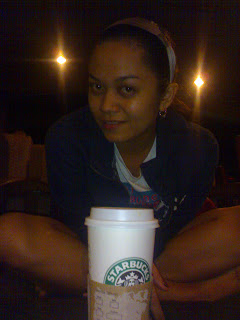I am proud to be Cabusawenio!
This year, 2011, Cabusao is celebrating its centenary. I could not give our town a superb or enormous act of praise. I am only a humble child of her earthly bosom. But my existence is obliging me to give due thanksgiving to her where my personality and maturity arose.
My existence started on the Diamond Year of Cabusao. Almost all the important beginnings of my life were catered by this beautiful town. I was born and raised by Cabusawenio parents from the clans of Hernandez and Rebeta. My chilhood was developed initially in barangay Camagong. My first education was given here through Camagong Day Care Center wherein my mother was my teacher. I spent my elementary education in Cabusao Central School. Afterwhich, I continued my secondary years in Sta. Lutgarda High School. Though my college education was not done here, this town served as the extension of such tertiary orientation especially that my apostolate and service were rendered here.
On spritual aspect, my initiation to Christianity was performed in my beloved Parish of St. Bernardine of Siena. (By the way, in 2014, this parish will also celebrate its 100 years. This parish is one of the two parishes in Cabusao. The other one is the Parish of St. Anthony Padua) My baptism was facilitated by Rev. Fr. Oscar Paraiso. On the same hand, my first confession and communion and my confirmation were also blessed in this parish. Started from my fourth year in elementary, I served as acolyte. I continued to serve here up to my college year through my apostolate.
I also immersed myself into different civic and religious activities. My ability to follow and lead as a youth was developed through participating and organizing groups and activities that would enhance the youth power of Cabusao. I once became part of Camagong Youth Organization. To my colleagues, Parish Youth Council, who would forget the Dusayan Youth Formation (DYF) which was initiated by Rev. Fr. Mike dela Rosa? As I observed, at its time of existence, it was one of the active youth group in town not just in religious affair but civic, too. Last, 2009, Cabusao Youth Community emerged. Though, a seasonal group but was able to promote the talent and heart of young Cabusawenio. (I miss you guys!!!)..
Cabusao is maybe not known like of any other prominent town, but in the heart of its children, “No other beautiful place than HOME.” I always miss the golden ricefield at the back of our house where I usually waiting for the beautiful sunset. I think, sunset is the unnoticed site where Camagong could be proud of. I miss also the ride of our motorcycle at the silent road of Pandan. Just a little forward to Barcelonita, we can find the preserved aviary – the Cabusao Bird's Sanctuary. I miss those happy people of San Pedro at the time we had our caroling there. Unfortunately for me, I was never been in Biong which I also dream to. I miss also the Pagoda every fiesta happened in the shore of Castillo, Sta. Lutgarda and Sta. Cruz. I miss the beautiful site of New Poblacion and some part of the town that I have seen from the Church bell tower.
I am happy to my town. It is small but for me it is the largest and the deepest place in the world because on the same way, it contains the largest and deepest part of my humanity. Not just mine but also those people whose like me, were formed themselves from the initiative spirit of Cabusao Land.
I write this not to publish who I am but to pay tribute to my beloved town which shape me on who I am now. My place of existence, somehow, defined the kind of person that I am living now. For such, I gratefully give thanks to you, my beloved town.
I always praying for you. My hope is always enkindled by the continous existence of the good-hearted Cabusawenios. Where there are proud, active, determined and good citizen, progress is also there.
Again, I want to say “I am proud to be Cabusawenio!”
Happy 100th year Cabusao...





















































